Plot summary
Skeeter is a 14-year-old orphan who lives with his uncle Jesse in a one-room shack in the swamps of the Pascagoula River in Mississippi. He has heard the sound of a strange animal in the swamp near their shack, and one summer evening he convinces his uncle to help him go out and find it. When they do, they see it is a small animal with short red and white fur that makes a chuckling yodel sound and cleans itself like a cat. Jesse is unsure what the animal is, but Skeeter is convinced it is a dog.
The next day, Jesse's friend Alpheus "Cash" Evans, owner of the general store in the nearby village of Lystra, comes to help Skeeter and Jesse track down the animal. With Evans is his tracking dog Gabe and two vicious hog dogs named Bark and Bellow whom he keeps leashed. Evans releases Gabe at the spot where Skeeter and Jesse saw the animal, and Gabe eventually picks up its scent and starts tracking it. As they listen to Gabe tracking the animal it becomes clear that it is outrunning Gabe. It bursts into the clearing, and Evans releases Bark and Bellow. When the animal stands its ground and fights back against the hog dogs, Evans calls them off and allows it to escape. He acknowledges that Skeeter was right - the animal is a dog.
The following day, Skeeter sets out to tame the dog. He is able to locate it, and it proves to be a friendly female who allows him to leash her and bring her with him to the shack. Jesse convinces Skeeter to let her off her leash, and she remains with them. Skeeter decides to name the dog Lady.
Skeeter and Jesse take Lady out with them, and when Lady flushes a covey of quail Skeeter becomes determined to train her as a bird dog. However, Lady's behavior makes it clear that she is someone else's dog, and Skeeter fears that Evans will discover who her real owner is.
Skeeter is horrified when Lady chases and kills a water rat, something no true bird dog will stoop to. He ties the half-eaten rat around her neck, and brings her back to the shack. There, he find Evans visiting with an English Setter he has just purchased. Evans had planned to give his new dog to Jesse and Skeeter to train (for which he intended to pay them three dollars a week), but seeing Lady with her rat causes him to change his mind. When Skeeter apologizes afterwards, Jesse shrugs it off and tells him to concentrate on training Lady.
Within a few months, Skeeter has trained Lady to cast and point like a proper bird dog. A visiting Evans sees Lady pointing at a clump of sage fifty yards away and refuses to believe she has detected birds from so far away. Jesse wagers the cost of a sawblade Evans had given him on credit that Lady is indeed pointing birds. Skeeter is privately dubious, but Jesse wins his bet when a covey of quail break from the sage.
Evans is impressed, and he spreads the word about Skeeter's remarkable dog. In time, Evans hears from a traveling salesman out of Mobile, Alabama that a kennel in Connecticut lost a Basenji near Pascagoula. The description of the lost dog, named Isis of the Blue Nile, matches Lady. A sorrowful Evans tells Jesse, who passes the word on to Skeeter. When Lady responds to the name Isis, Skeeter knows he has the lost Basenji, and decides to return her to her rightful owner. A wire is sent to the kennel, and a man named Walden Grover flies down from Connecticut to take possession of Lady.
Skeeter himself must put Lady in the crate in Grover's pickup truck, then watch as Grover drives off with her. Evans then asks Skeeter to finish training his English Setter, and the boy accepts. With the $100 reward Grover gave him, the boy buys his toothless uncle a set of false teeth, and puts a down payment on a 20 gauge shotgun for himself.
Major themes
Good-Bye, My Lady is a coming of age story. When Skeeter tames Lady, Jesse acknowledges the boy's right to keep her, and defers to Skeeter in all matters concerning Lady. Skeeter's growing maturity is also marked by his uncle's willingness to allow him to drink coffee, which is regarded as an adult beverage. As the novel opens, Skeeter is not permitted to drink coffee. After he tames Lady, his uncle allows him heavily creamed coffee, and after he allows Grover to take Lady away, Jesse tells Evans that Skeeter (whom he now refers to by his given name, Claude) drinks his coffee black.
James Street, a native of Mississippi, was politically liberal, and his fiction often involved an attempt to reconcile his heritage with his liberal views on race. Good-Bye, My Lady includes an African-American family, the Watsons, who own a 60-acre (240,000 m2) farm across the river from Jesse and Skeeter. The Watsons' eldest son, Gates, is a college graduate. Towards the end of the novel Skeeter learns that Gates Watson knew all along where Lady came from, and also about the reward for her return, but remained silent out of friendship for Skeeter.

The Basenji is a breed of hunting dog. It was bred from stock that originated in central Africa. The Fédération Cynologique Internationale places the breed in the Spitz and primitive types. The Basenji produces an unusual yodel-like sound, due to its unusually shaped larynx. This trait also gives the Basenji the nickname the 'barkless dog.'

The St. Bernard or Saint Bernard is a breed of very large working dog from the Western Alps in Italy and Switzerland. They were originally bred for rescue work by the hospice of the Great St Bernard Pass on the Italian-Swiss border. The hospice, built by and named after the Alpine monk Saint Bernard of Menthon, acquired its first dogs between 1660 and 1670. The breed has become famous through tales of Alpine rescues, as well as for its large size and gentle temperament.

The Shaggy Dog is a 1959 American fantasy comedy film produced by Walt Disney Productions and loosely based on the 1923 novel The Hound of Florence by Felix Salten. Directed by Charles Barton from a screenplay by Lillie Hayward and Bill Walsh, the film stars Fred MacMurray, Tommy Kirk, Jean Hagen, Kevin Corcoran, Tim Considine, Roberta Shore, and Annette Funicello. The film follows a teenage boy named Wilby Daniels who, by the power of an enchanted ring of the Borgias, is transformed into a shaggy Old English Sheepdog.
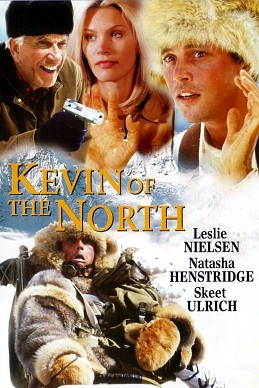
Kevin of the North is a 2001 American comedy film directed by Bob Spiers. It stars Skeet Ulrich, Natasha Henstridge, Leslie Nielsen, and Rik Mayall and is about an Alaskan Iditarod Trail Sled Dog Race in which Kevin Manley, whose grandfather has passed on and now must participate in the state's Iditarod Trail Sled Dog Race in order to prove he's worthy enough for his grandfather's estate. The film was released to DVD in the United States with the alternate title of Chilly Dogs on February 4, 2003.
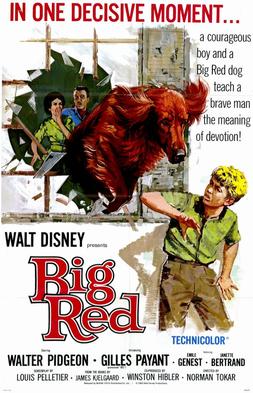
Big Red is a 1962 adventure film from Walt Disney Productions. Based on a 1945 novel by American author Jim Kjelgaard and adapted to the screen by American screenwriter Louis Pelletier, the film starred Walter Pidgeon.

Cannery Row is a novel by American author John Steinbeck, published in 1945. It is set during the Great Depression in Monterey, California, on a street lined with sardine canneries that is known as Cannery Row. The story revolves around the people living there: Lee Chong, the local grocer; Doc, a marine biologist; and Mack, the leader of a group of derelict people.

Henry Trefflich was an animal importer and dealer. He procured animals of many different types and sizes from Africa, Asia and South America and imported them to the United States via ship and airplane. He sold them to zoos, circuses, Hollywood studios and also to various private and government research institutions. His business was headquartered on Fulton Street in Manhattan, New York City, NY, USA, where his shop was considered a local attraction in its own right. In the early 1960s his building along with the neighboring properties were bought by the Port Authority for the construction of New York City's World Trade Center.
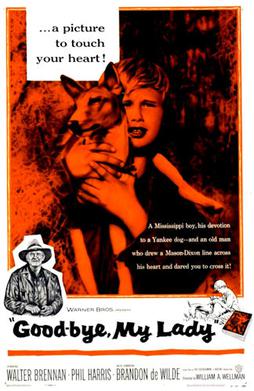
Good-bye, My Lady is a 1956 American drama film adaptation of the novel Good-bye, My Lady (1954) by James H. Street. The book had been inspired by Street's original 1941 story which appeared in The Saturday Evening Post. Street was going to be the principal advisor on the film when he suddenly died of a heart attack. A boy learns what it means to be a man by befriending and training a stray Basenji dog and then is forced to surrender her to its rightful owner. Both readers of the story and film-goers found the boy's eventual loss of the dog unexpected.
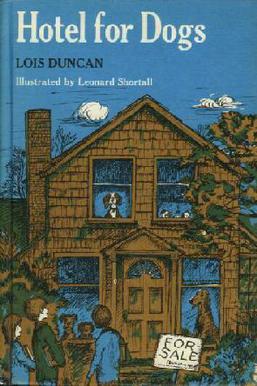
Hotel for Dogs (1971) is a children's novel by Lois Duncan. It was adapted into a film of the same name by Nickelodeon Movies for DreamWorks Pictures, released on January 16, 2009. When the book was originally released in 1971, Andi's name was Liz, and Friday's name was Sadie. The book was re-released December 1, 2008, to promote the film with the names changed.

Benji: Off the Leash! is a 2004 American comedy-drama film directed, written, and produced by Joe Camp. It stars Nick Whitaker, Chris Kendrick, Christy Summerhays, Randall Newsome, Duane Stephens, and animal actors. It is the fifth film in the Benji series, and the last Benji film that Joe Camp has directed, produced, and written, until his death in 2024.
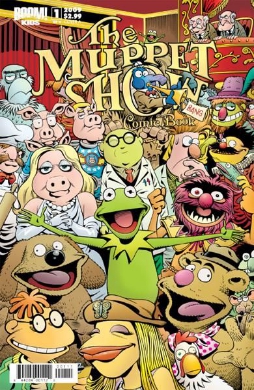
The Muppet Show is a comic book series based on the variety television series of the same title created by Jim Henson and featuring The Muppets. The series was written and drawn by Roger Langridge and published by Boom! Kids, an imprint of Boom! Studios. In 2011, the Boom! license with Disney Publishing Worldwide expired. Disney's own comic book publishing subsidiary, Marvel Comics, renamed the series Muppets and published four issues in 2012.
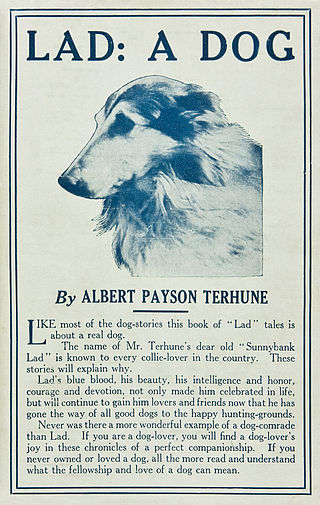
Lad: A Dog is a 1919 American novel written by Albert Payson Terhune and published by E. P. Dutton. Composed of twelve short stories first published in magazines, the novel is based on the life of Terhune's real-life Rough Collie, Lad. Born in 1902, the real-life Lad was an unregistered collie of unknown lineage originally owned by Terhune's father. Lad's death in 1918 was mourned by many of the story's fans, particularly children.
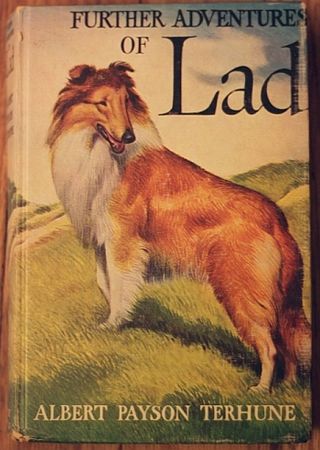
Further Adventures of Lad, also known as Dog Stories Every Child Should Know, is a 1922 American novel written by Albert Payson Terhune and published by George H. Doran. A follow-up to Lad: A Dog, it contains an additional eleven short stories featuring a fictional version of Terhune's real-life rough collie Lad, including the stories of Lad's initial arrival at the "Place", the death of his mate, and the day of his own death. Most of the stories were originally published in various magazines, and touch on themes of justice and the concepts of right and wrong. Terhune notes that he decided to publish the novel due to numerous letters received in response to the first novel, and the thousands of visitors who came to Sunnybank to visit the real-life Lad's grave. Though he initially intended for Further Adventures of Lad to be the final book of Lad stories, he would eventually publish one more book of stories, Lad of Sunnybank, in 1929.

Michelle Elizabeth Tanner is a fictional character on the long-running ABC sitcom Full House, who was portrayed by Mary-Kate and Ashley Olsen. She first appeared in the show's 1987 pilot, "Our Very First Show", and continued to appear up to the two-part series finale, "Michelle Rides Again", in 1995. The character of Michelle was the Olsen twins' first acting role; the two were nine months old when they started working on the series. Shortly after Full House ended, the sisters appeared in many films and TV shows up until their teenage years. Michelle Tanner does not appear in the 2016 Netflix sequel, Fuller House, as both Olsen twins declined to reprise the role.

Huckleberry Finn is a 1931 American pre-Code adventure comedy film directed by Norman Taurog, and written by Grover Jones and William Slavens McNutt, based on Mark Twain's 1884 novel The Adventures of Huckleberry Finn. It stars Jackie Coogan as Tom Sawyer, Mitzi Green as Becky Thatcher, Junior Durkin as Huckleberry Finn, and Jackie Searl as Sid Sawyer.
Cosmo is a canine actor. He is a Jack Russell Terrier that is best known for his roles in the movies Hotel for Dogs and Beginners. He was adopted from a breed rescue society by animal trainer Mathilda DeCagny.
The following is a list of recurring Saturday Night Live characters and sketches introduced between September 26, 1998, and May 15, 1999, the twenty-fourth season of SNL.
The Mad Dog Gang Meets Rotten Fred and Ratsguts is a 1978 New Zealand children's television drama. It was written by Ian Mune and Arthur Baysting and directed by Ross Jennings. It was filmed in Dunedin and the surrounding Otago country district.

On May 25, 2020, a confrontation occurred between Christian Cooper, a black birder, and Amy Cooper (unrelated), a white dogwalker, in a section of New York City's Central Park known as the Ramble.
















